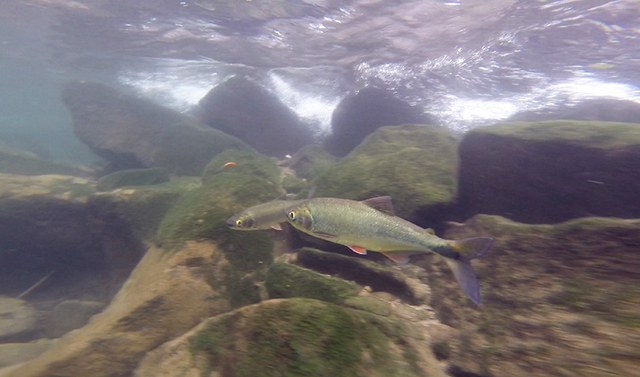| Bryconidae ("Brycon characins"), subfamily: Bryconinae |
| 32.51 cm SL (male/unsexed) |
|
benthopelagic; freshwater |
| Central America: Wawa basin in northern Nicaragua to Matina basin in southern Costa Rica, Atlantic slope. |
|
Dorsal soft rays (total): 11-11; Anal soft rays: 33-37; Vertebrae: 45-45. This is distinguished from all congeners in Central America by having 49 to 54 scales in the lateral line (vs. 43 to 48 in Brycon argenteus, 55 to 61 in B. guatemalensis, and more than 64 in B. behreae, B. chagrensis and B. striatulus) and anal fin notably longer than head, with 33 to 37 total rays (vs. an anal fin about equal to length of head, with 24 to 28 total rays in B. argenteus , B. obscurus, and B. petrosus, the last two species with 48 to 55 and 53 to 58 scales in the lateral line, respectively). This species can be further diagnosed from B. guatemalensis by the following combination of characters: 5 or 6 rows of scales between lateral line and pectoral fin base (vs. 7 or 8); 9 to 11 (generally 10) rows of scales between lateral line and dorsal fin base (vs. 10 to 12, generally 11); 5 to 7 (generally 6) rows of scales between lateral line and anal fin base (vs. 7 to 9, generally 8); and a elongated and shallow caudal peduncle, whose length is 1.78 to 2.35 times its depth (vs. a short and deep caudal peduncle, whose length is 1.25 to 1.61 times its depth) (Ref. 95069). |
| This species is found in lakes, but also abundant in fast-flowing rivers and streams. It occurs at elevation from 0-600 m in lakes, rivers and creeks, and tolerates temperate ranging from 21-34°C (Ref. 95069). |
|
Least Concern (LC); Date assessed: 08 April 2019 Ref. (130435)
|
| harmless |
Source and more info: www.fishbase.org. For personal, classroom, and other internal use only. Not for publication.
